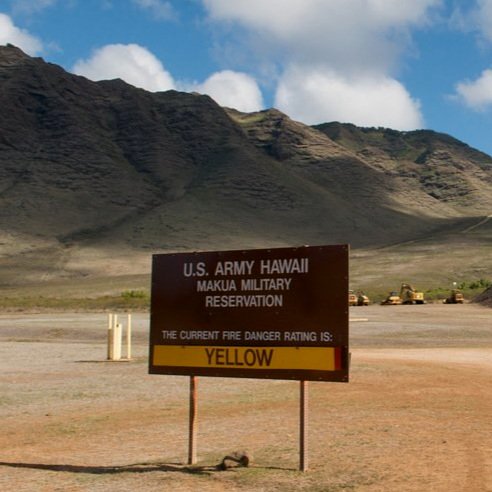Photographs from Makua Valley, Waianae Coast, Island of Oahu, Hawaii
Type: photographs with captions
Summary: Pinky and I have never been inside Makua Valley so Daisy was nice enough to take some photos and write a few words for us. Report filed by Daisy, Pinky Show CR01, November 2009.
This past Sunday I was invited by Dr. Lynette Cruz to accompany a group of students from Hawaii Pacific University and the University of Hawaii to Makua Valley. William Aila Jr. of Malama Makua was our principal guide; he spoke to us about this sacred and once life-supporting valley’s tragic recent history.
Today, under normal circumstances, no one is allowed to enter Makua valley. For more than 60 years the U.S. military has claimed the valley for its own use as: a live-fire training area, a bombing and artilliary target, a dumping ground, etc. The valley was seized by the U.S. government during World War II under the pretense of military necessity. The Hawaiian families living there were forced off their land at gunpoint and promised they’d be allowed to return after the war was over. 65 years later, the U.S. military still refuses to leave. This is how Makua valley, once revered for its generative power, is now more widely known as a military training ground for American colonial wars - in Afghanistan, Iraq, Vietnam, and beyond.
The cumulative effects of decades of highly destructive military activity - intense bombardment, deliberately set fires, outright poisoning - all without any input or oversight by the people of the neighboring communities - has, predictably, produced an environmental catastrophe. Unexploded munitions are everywhere. Even experienced unexploded ordinance specialists are forbidden to move through various parts of the valley unless first acquiring special permission from the Pentagon.
In spite of all this, even on our very brief visit, it was clear to us that Makua valley only wants to heal itself. Everywhere we saw both subtle and obvious signs of life, however precarious its future may be. There is a dedicated group of organizations and individuals from the community who are fighting all structures conspiring to keep Makua valley hostage to the predatory logic of settler states and empire building. In many ways the valley’s recent history is also the story of Hawaii, written in miniature.
For more information, do an internet search: "Malama Makua" and "Kahea".
Click on the images to make them larger; mouse over for captions.



















